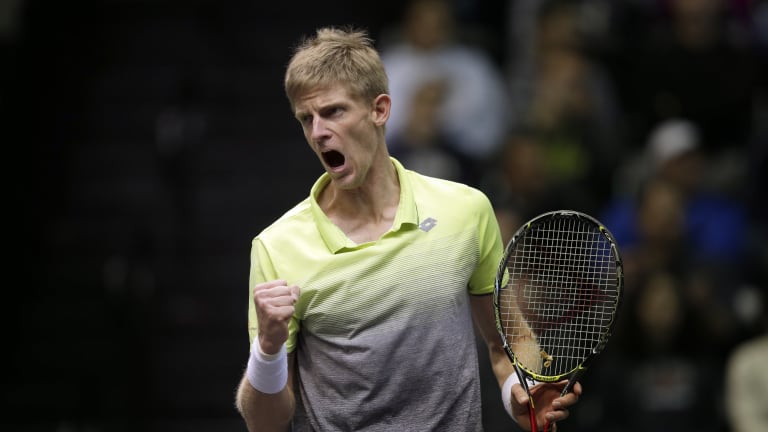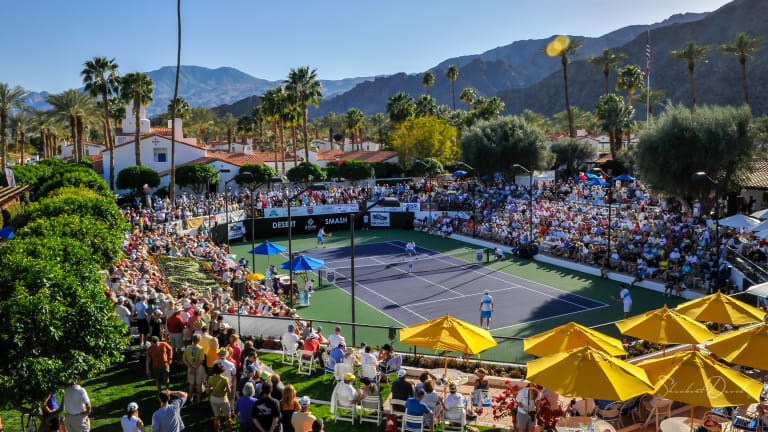Longtime followers of Kevin Anderson wondered periodically if the humble, 6’8”, South African had a tendency to sell himself short. Heading into the 2018 season, the big fellow had captured only three singles titles across his entire professional career. He had been beaten in 10 finals. When he started working with his new coach, Brad Stine, a few months ago, they both agreed that it was time for Anderson to turn that statistic around and start winning titles more regularly on the ATP tour, to make the most of his opportunities in final-round contests.
Although Anderson lost another final at the start of this season in Pune, India, he came through handsomely the week before last to win the New York Open on Long Island, rising to a career high of No. 9 in the world after claiming that crown. That triumph just might prove to be a critical turning point for this earnest and supremely dedicated 31-year-old. I spoke with Anderson by phone several days after his victory in New York, and found him in a very good frame of mind.
In taking that title in New York, Anderson was stretched down to the wire in all four of his matches, and was pushed into final set tiebreakers three times, including his gritty final-round win over Sam Querrey.
He told me, “It meant a lot to me to win so many close matches, digging through them and then getting through my final in New York. The main thing is I was able to play the kind of tennis I wanted to in the final, which hasn’t always been the case in the past. The more that I can impose myself and play the way I know I am capable of playing, the more comfortable I will be in big matches and finals.”
Stine is fully in accord with Anderson on that count.
He recalls, “In my earliest conversations with Kevin, I brought up his history of winning only three titles in his career. I said I wondered why with his skill set that would be true. After he lost the final in Pune, India in January [to Gilles Simon], Kevin told me he had thought a lot about it and he said I was absolutely right. He said he should have won a lot more of these titles. He felt that he had not performed his best in finals because the situation kind of overwhelmed him too often. I had told Kevin as soon as we started talking about working together that if I was going to come on board, one of the things I wanted to do was help him to win more tournaments.”
Delighted with the way Anderson performed match after match in the clutch at the New York Open, Stine says, “Hopefully this will free him up and give him the opportunity to create more opportunities. For Kevin to be a legitimate contender in the bigger tournaments, we have got to get him to go deep in the 500s and 1000s and be able to compete with the eight guys that are ahead of him and everybody behind him as well so he can carry that experience into the Slams and hopefully have more success, like he did last year at the U.S. Open, of getting deep into Slams.”
Anderson clearly wants to reawaken the feelings he had at the Open last year.
“There haven’t been that many people who have been there in the finals of Slams in the last 10 years because of the dominance of a small group of players. My first takeaway is that knowing what it feels like to just walk on the Center Court in the finals of a Slam is very valuable. I showed myself that I can compete at that level, in the big moments at Grand Slams. It gives me a lot of motivation to keep working so I can give myself another shot. As great as the U.S. Open was for me, I was still one match too short of winning the title, and ultimately that is a big goal of mine.”
Having said that, Anderson clarifies that he has different sets of goals, and he is targeting all of them.
He says, “Some of these goals are result oriented and some are longer term goals. But I have really tried to focus on my process goals, in terms of day in and day out and taking care of my body, along with my match goals of how I am looking to compete each match, and the way I want to be playing. You can sometimes get bogged down about defending points or needing to get a certain amount of points, but your body doesn’t know the difference. If you keep working each day on those process goals, that is how you get your best results.”
<

